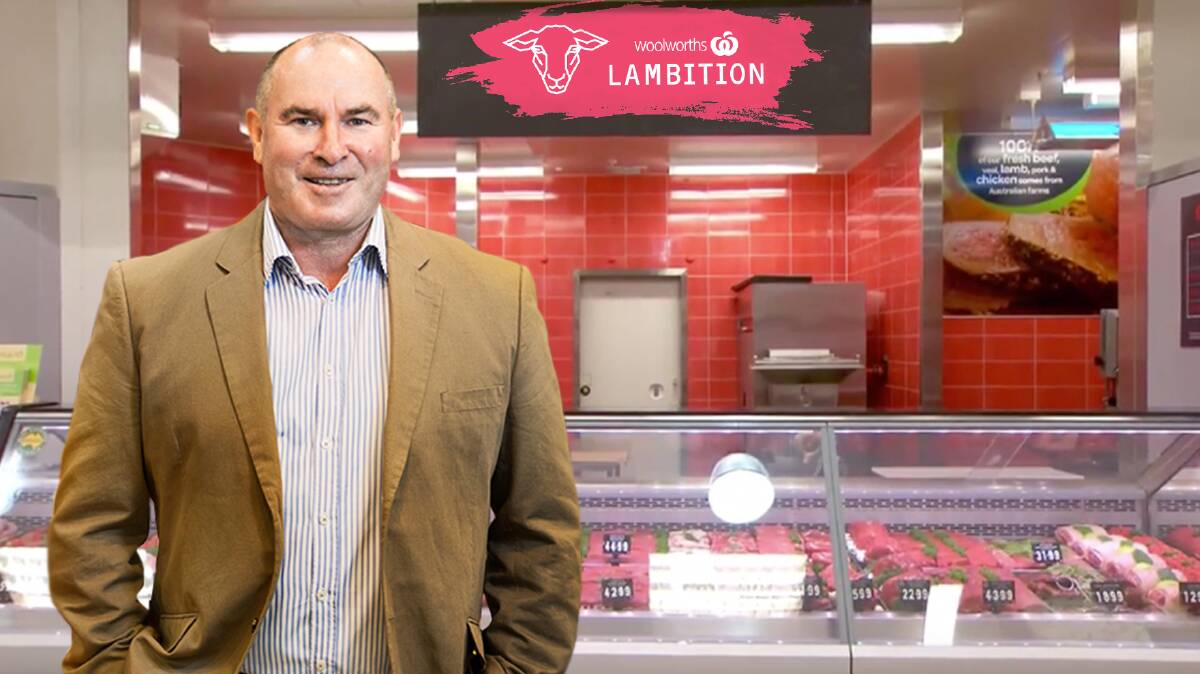Lamb consumption on the decline

This article is advertiser content from Woolworths
Declining lamb consumption is a major challenge facing Australia’s sheepmeat industry, with average consumption dropping an estimated three kilograms a person in the last 20 years.
This trend is a major theme to be explored at the inaugural sheep industry celebration, Woolworths Lambition, to be held in Bendigo on 21 July.
The consumption fall has concerned Woolworths Meat Company director Pat McEntee, who said it has become his passion to keep traditional proteins relevant to Australian consumers.
Mr McEntee said multiple factors had worked against the sheepmeat industry, but the leading cause of the decline in consumption had been price when compared to other proteins.
“Woolworths offers customers a range of proteins, from beef and lamb to poultry and pork, but we make significant investment in marketing to Australian families excellent quality lamb cuts to suit their needs,” Mr McEntee said.
Figures from Meat and Livestock Australia show the average retail price of lamb in 2017 was $14.82, which is a price point that has more than doubled in the last 15 years – in comparison to chicken’s increase of 12 per cent over the same period.
“Historically, lamb was seen by customers as a cheaper alternative to beef as a source of protein, but there came a point in time where lamb became extremely expensive,” he said.
“In some of the trends that we see, consumers are eating less lamb, and they’re eating less because of affordability.”
Mr McEntee said there were other decision-making elements that impact consumers’ meal choices.
“Customers are eating less traditional forms of protein, especially during weekdays. Convenience and preparation time, smaller portions to assist with a balanced, healthy diet, and growing consumption of seafood such as salmon portions are other contributors to decreasing lamb consumption,” he said.
Reducing food waste is another contributor, he said.
“When you look at the conversations we have with customers in regards to eating smaller portions, some say it’s for health, some say cost but increasingly customers are conscious there’s a waste factor when they see there’s food leftover,” he said.
“Once upon a time, tonight’s protein was tomorrow’s lunch, but nowadays these sorts of meals are had at dinner and less at other times of the day.”
So what’s being done to put lamb back on the menus of Australian households?
Mr McEntee said Woolworths would continue to develop new innovative cuts to keep Australian lamb on the plates of consumers. He said moving products to fixed weight/unit pricing could mitigate the decline in consumption.
“This helps customers with their budget and makes it easier to shop as customers clearly see the price per pack and no longer are pressured by calculating the price per kilo of an item,” he said.
The red meat industry’s marketing and research body Meat & Livestock Australia (MLA) has been working to put lamb at the forefront of consumers’ minds when making decisions about meals.
MLA chief marketing officer Lisa Sharp said it was important to focus on the benefits of lamb when promoting it to consumers, including its versatility and shareability.
“With increasingly busy lifestyles, there’s less time to plan meals, so not as any meals are eaten together,” Ms Sharp said. “But our research tells us that families want to have more shared meal experiences.”
Ms Sharp said a number of years ago, MLA used those insights to develop a position of unity.
“Nothing brings people together like lamb, so we focused on a summer holiday like Australia Day to show that lamb is perfect for sharing,” she said.
“We’ve since built on that idea, expanding our marketing activity to other key seasonal periods.”
This article is advertiser content from Woolworths


